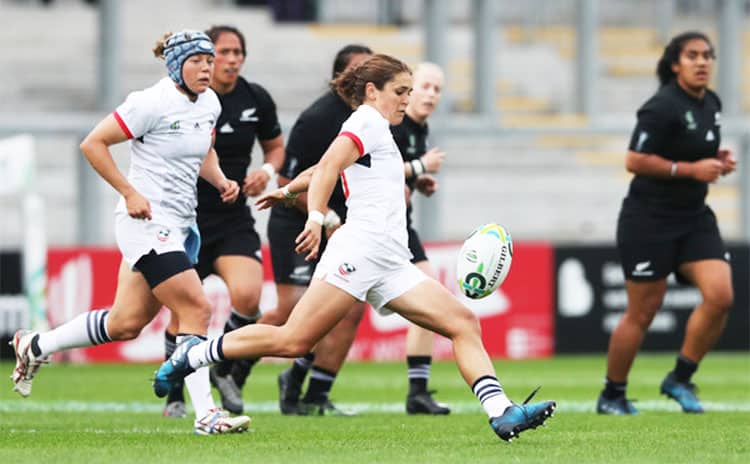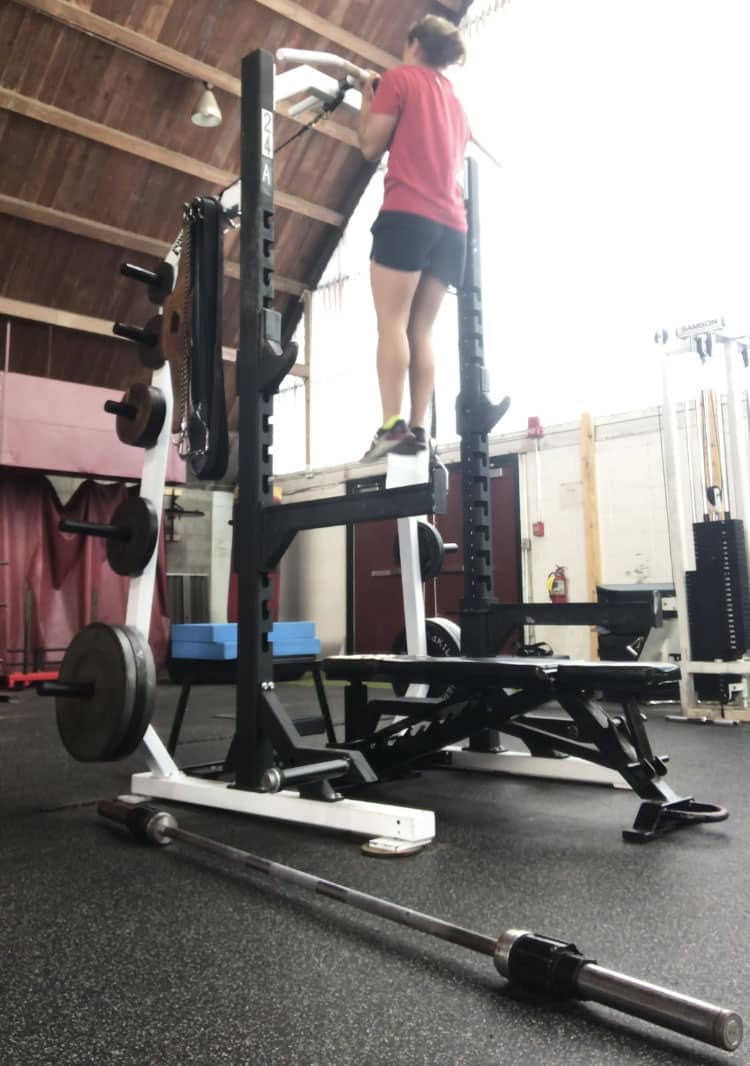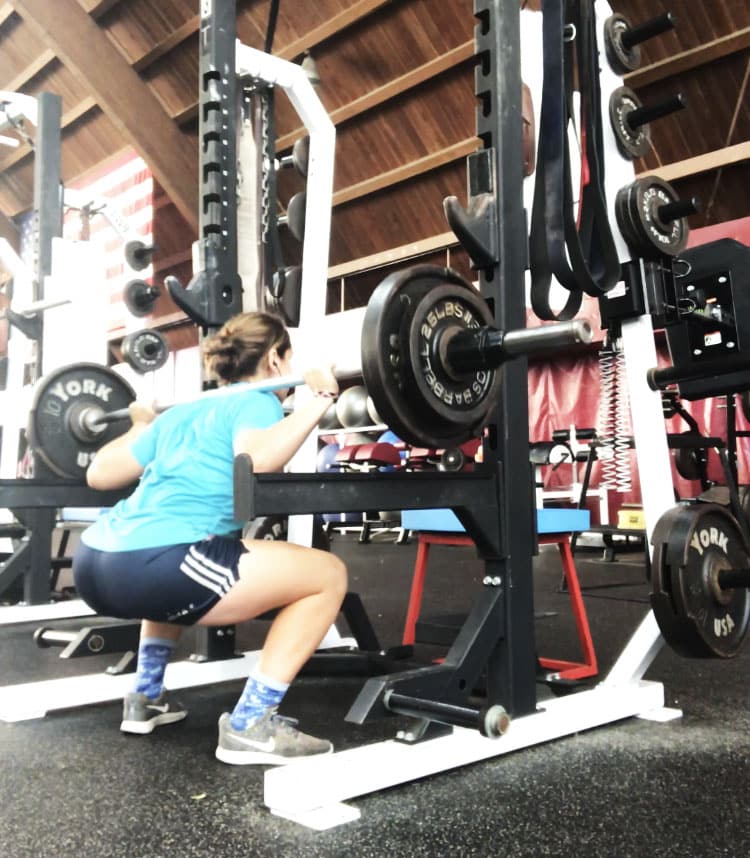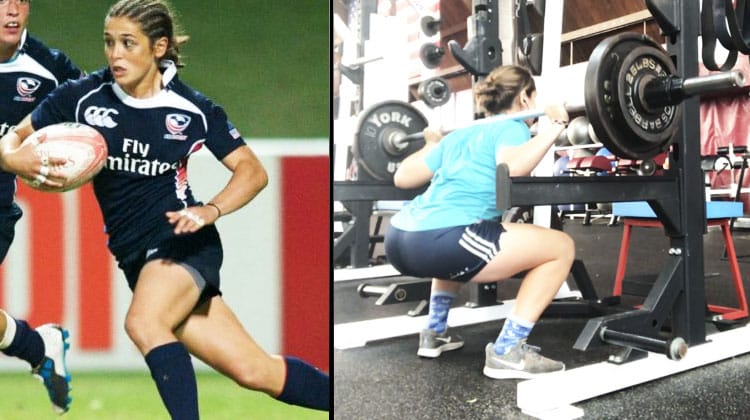It’s my opinion (totally unbiased, of course) that 7s Rugby is the most challenging sport to an athlete’s level of fitness across the entire spectrum. According to the NSCA, total physical fitness is consistent with 11 components [Michealides, et al.]:
- Body Composition
- Heart Rate/Blood Pressure
- Metabolic Rate
- Aerobic Power
- Lactate Threshold
- Muscular Strength
- Muscular Endurance
- Power
- Speed and Agility
- Mobility
- Balance and Stability
While I know many other sports challenge all 11 of these, such as decathlon, wrestling/combat sports, AFL, and more, 7s Rugby is the hardest.
That’s my story and I’m sticking to it. Therefore, in order to be a dominant 7s player, you’ll need to excel in all of these areas.
The majority of field-based training tackles the first five. Field sessions are “of high intensity, involving high volumes of maximal sprints, reactive agility, and ball movement skills (passing, kicking, etc.)” (Meir, 2012).
Obviously, the playing of the actual game should be prioritized in any sport, and work in the gym should complement that.
But here, we’re going to focus primarily on developing muscular strength, muscular endurance, and power. Towards the end, we’ll discuss the last three and how your training can contribute to injury prevention and keeping you on the field.
Kimber Rozier’s Weightlifting Routine for Rugby Sevens

The “Big Rocks”
You simply can’t train like a bodybuilder and expect to excel in rugby.
Sevens, especially, challenges the entire body with each movement, and you have to train the way you want to play. Therefore, all of the “big rocks”, or most integral movements, are multi-joint, compound exercises under some sort of load.
Power Clean
By far my favorite exercise in the gym. There’s something about a great power clean that feels so…well…powerful.
It’s exactly the same movement as a tackle – triple extension against an external load – and even translates perfectly to jumping and sprinting. While some research has shown that the barbell hip thrust shows greater adaptation to sprint performance, there’s conflicting evidence (Contreras, 2017).
The power clean is more relatable to 7s rugby. Why? It’s been shown to increase max velocity stride length in rugby players (Barr et al. 2014), improves peak power output (Comfort, 2015) Changing body heights rapidly and controlling an outside object creates a body awareness and coordination that directly correlates to the sport (Kipp, et al., 2018).
Push Press
Passing, tackling, rucking, lifting in a lineout… all great examples of generating power through the lower body and transferring to your upper body. I’m a big fan of the push press over the jerk for 7s training.
Although the meathead version of me likes the jerk (since it allows for more weight overhead), in reality, a push press is a much better indicator of one’s ability to continue to drive force upward through extension, all the way through the wrist. To do a push press, just a slight dip and leg drive creates that initial force, getting the weight about eye level. The rest is a test of upper body strength, rather than simply just dropping under the weight.
Finally, pressing anything overhead and stabilizing it properly creates massive benefits for the core – a part of your body that’s crucial to any movement in the game.
Prowler/Sled Push
Level changes and developing force at low joint angles are critical to power in tackles, rucks, and scrums. The best part about prowler pushes, however, is that they’re a low-impact way to train for pure strength, pure power, or muscular endurance.
Load that bad boy up to the max and drive it 10m, and you’ll get more single leg strength gains than any squat can give you.
Drop the weight to about 20% body weight in total, and push it as quickly as you can for ~10-30m to train for power (Williams, 2015). Or finally – load up a medium weight and drive it around the park for three minutes, and you’ll feel a muscle burn similar to playing three minutes straight of sevens.

Neutral Grip Pull-ups
While I’m a massive fan of horizontal pulling for general shoulder/upper back health (see below), the contact point in rugby involves a lot of high-impact, overhead movements.
Therefore, building the tensile strength from the eccentric load transitioning to concentric at full-range can protect your shoulder when taking out the legs of the opposition. Choosing a neutral grip allows your shoulders to be in a more comfortable position, which ironically is the same position you’re in during a ruck or scrum.
Not only are pull-ups great for placing a load on overhead movements, but they’re also fantastic tests of strength-to-bodyweight ratios. 7s players need to be incredibly strong, but also incredibly fit.
Nothing highlights your weaknesses like an inability to do a pull-up. So, get under the bar, no matter how modified it may be, and put your strength to the test.
Trap Bar Dead Lift
But where’s the back squat? Look, I love a good squat more than most. But we’re talking maintaining health throughout the season, and we’ve already got tons of movements where the load is at the shoulders.
You can get squat mechanics with this deadlift, but also include the benefits of upper back strength and stability with a deadlift.
It’s the best bang for your buck involving both the hip hinge and front side mechanics. Finally, the trap bar deadlift starts from a purely concentric movement. That means you don’t have the ability to generate kinetic energy on the “downward phase” of movement (Camara, et al., 2016).
Think of the best steppers in the world. They can create something out of seemingly nothing. Wouldn’t you want that talent in your 7s game? That’s what the deadlift does. It takes you from zero to sixty with just your pure strength, body position, and power. That, my friend, will definitely translate to your game on both attack and defense.
Training for Injury Prevention will Change you as an Athlete

Research into 7s has shown that due to the nature of the game of sevens, players may be at a higher risk of injury.
According to Meir, “the most common site of injury involved the shoulder (15.8%), followed by the thigh (14.5%) and hand (14.5%). More than 43% of all injuries occurred to the lower body and primarily involved the thigh, knee, and ankle. Similarly, more injuries occurred in the second half of the play, once again suggesting that fatigue plays a significant role in sevens play and injury incidence” (Meir, 2012).
You can be as quick and agile as you’d like, but 7s requires you to maintain those qualities under fatigue. In my experience, this is the most overlooked area of training by athletes. The big rocks are fun, flashy, and make you feel like the Hulk. But doing isolate hamstring work? It’s not only difficult, but it’s also boring.
However, I’ve seen more athletes sidelined by injury at their prime than I’d like to imagine. Staying on top of your game means staying in the game.
So, don’t overlook these key elements of training for 7s rugby, because they might make the difference for you.
Core Stability and Scapular Stabilization
A well-balanced upper back will protect your shoulder girdle, as those who are overly pec/anteriorly dominant tend to round their shoulders and have winged scapulae. When you’re taking hit after hit at up to 30 km/hr, you need to protect your weaponry. Use these exercises to sculpt your upper back in to a battering ram.
½ kneel landmine press
100% the primary unilateral pressing exercise. By kneeling on one knee, it completely negates your ability to drive through the lower body, requiring solid joint stability and strength at the shoulder.
Unlike the dumbbell overhead press, the landmine press is a mix of a horizontal and vertical press, which allows you to press out, rather than strictly overhead. This motion may help alleviate any pain from tackles or training that’s present in the shoulder, and eliminate compensation through the lower back (Cressey, 2017).
Inverted Row
Similar to a pull up, inverted rows are closed chain movements, which means you’re moving your own body through space rather than lifting something else. Therefore, they’re great for body awareness and core stability.
Torching your rear delts, mid/lower trap, rhomboids and more, inverted rows add to upper back strength to prevent muscular imbalances as a contrast to most pressing movements.
Unilateral Loaded Carries
Suitcase Carries, KB Front Rack Carries, Waitress Carries, and Bottoms-Up Kettlebell Carries. If it were up to me, a good weightlifting program would rotate between these four carries consistently. Why? Dynamic stability, core stiffness, and overhead stability/shoulder health. Provided you have the shoulder mobility to perform them well, waitress carries, in particular, help create a safe, packed shoulder girdle for dominant tackles (Dewar, 2018).
Dr. Stuart McGill “quantified asymmetric carries such as the suitcase carry and found that quadratus and the abdominal wall were challenged to create this unique but essential athleticism” (McGill, 2012). He was a big proponent of the bottoms-up carry, as the extra control needed to keep the bell in position trained core stiffness exceptionally.
When running, cutting, and tackling, “the quadratus lumborum and the abdominal obliques on the swing leg side…help power to be transmitted up the body linkage with no energy losses resulting in a faster cut” (Horne, 2013). Translation: the better you can dynamically control your limbs on opposite sides through movement, the more effective and quick your movement on the 7s pitch.
Hamstrings, hamstrings, hamstrings
According to a study done in rugby union players, between-limb imbalance in eccentric hamstring strength is associated with an increased risk of hamstring injury (Bourne, et al. 2015). Seems pretty obvious to therefore reduce this imbalance, but many programs miss a key element of training – eccentric knee flexion.
Enter the Nordic Hamstring Curl. It’s basically kneeling, anchoring your feet to something, and controlling a fall forward. During sprinting, eccentric knee flexion controls your stride and allows your foot strike to be efficient and safe. They’re constantly being lengthened at high speed at the moment of impact, and building the musculature to withstand that keeps you healthy.
Finally, look at the size of any sprinter’s hamstrings. They’re massive – because they’re the powerhouses of speed. Eccentric training has been shown to increase size of muscle tissue because
- a) it causes more muscle damage (key to hypertrophy)
- b) you can lift heavier loads (more mechanical tension) through eccentric training (also key to hypertrophy)
However, many trainees find Nordics too difficult to start. You’re put at a massive mechanical disadvantage and trying to train something that’s often neglected. You may need to attach a band to something, place it underneath your arms, and allow it to take some of your weight as you fall.
Another great option is the eccentric Single Leg Swiss Ball Curl. Lie supine on the floor with a Swiss ball under your feet. With one leg on the ball, other in the air, extend your hips and bridge up. From there, perform a hamstring curl by bringing your heel to your butt, and spend about five seconds returning to the start. These can be easier as you build up strength, and are also great to target unilateral imbalances in particular.
Conclusion: WeightLifting for Sevens Rugby

A well-balanced program will prime you for performance on the pitch. While you do want to be strong and durable, it doesn’t help to be able to lift a house if the house can sprint past you.
Core strength throughout all planes of movement will hands down make you stronger and a better athlete. From there, take care of your shoulders, hips, hamstrings, and lower legs, and you’ll be well on your way to success.


Body weights 7srugby program
Great post! Thanks for being an inspiration. 🙂
Hey Sarah, thanks for reaching out!
We’re glad that you enjoyed our post, let us know if you have any ideas for future articles and we’ll see what we can do 🙂
Best regards,
Team LeanBulking.com